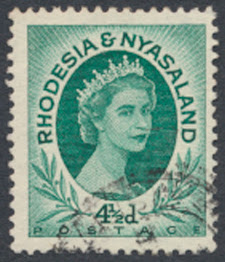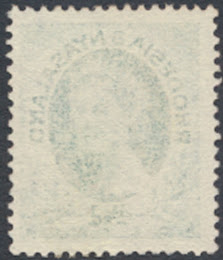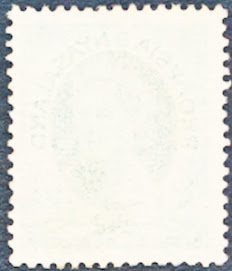Collectors Buying With Confidence – Is that really the colour of the stamp being sold?
In my previous article I briefly wrote about removing self-adhesives stamps from envelopes, at least at a high level, and I did not, deliberately, address every type of gum. I hope it was useful.
But just as a follow up one of my very knowledgeable and kind readers did write to add the point that some GB in particular no longer have the water-soluble layer between the stamp and the glue. Modern Great Britain self-adhesives have been like this since 2009 - not just Machins, but current definitives and self-adhesive special stamps and miniature sheets. I will add that I do not know the gum (glue) type found in other county’s stamps but I expect over the years those gums have changed and also are no longer water soluble or have a water soluble layer as was commented for GB stamps. Collectors would perhaps be wise to learn the gum types before thinking or trying to remove a stamps from an envelope – if that is what they want to do.
Anyway, today; One thing I did mentioned
in my last post was the scanning of the stamp so I thought that would be the
topic here. And the Collector Buying With Confidence question is, is that
really the colour of the stamp being sold?
My example in the previous article was perhaps useful but not specific for this topic and neither was the example I used on colour in the article showing the two Italian stamps.
This time I want to take the topic further and talk about the deliberate – because I contend it is unlikely to be anything other than deliberate – changing or enhancing of the colour of the image of the stamp being listed.
While I suggested the GB Machin had been colour adjusted for the purposes of the scan as it was a self-adhesive stamp that had been removed from the envelope or paper it was used on, I would like to take that aspect a stage further and talk about colour or scanner colour adjustments for a normal stamp.
As a starter I will also mention that many stamps were printed in different shades. These are well documented in the various catalogs like Scott, SG and Michel for example. Colour identification can be rather tricky and depending on catalog pricing can mean a large difference in potential value between two stamps which are apparently the same.
I have never seen scanning colour enhancements for online marketplace listings done to a suggest or support a stamp being of a higher value than it is. But, I have seen many examples of stamps that just were not issued in the colour shown. Why? To better present the stamp I would think.
More commonly this is because the seller - it would seem from all the evidence and examples one can quite easily see for oneself – has brightened the image. Why? The answer is either, by accident, by a poor setting on the scanner, or to make the image more attractive in its listing presentation.
Some people I know will argue with me that this does not happen. I argue it does and there is adequate proof if one cares to take the time to look. Of course we don’t see it until we are looking for a stamp we want to buy and we see many copies of the one, all side by side, that we can obviously compare and then we notice one or more are, let’s just, say very bright, or very dark or whatever has happened to “enhance” the colour presentation. Some examples to show brightness: A copy of the stamp in the colour / shade it was issued – it was not issued in a very bright shade - Example 1, showing Front and Reverse and another copy, Example 2, the stamp “brightened”.
Example 1 from a direct scan of the stamp from my
scanner.
Example 3 the first example after brightening on the scanner.
But let’s try it once more. This time
with even more complex colour adjustment.
One more example. And this time showing the stamp as it was received (left image) and then an image of the actual stamp as listed for sale.

So, Collectors Buying with Confidence – do look carefully and learn to understand what you are seeing. It is ok to buy a brightened stamp if it is the one you want but do be prepared for it to be as you might expect based on the catalog and not as the image shown in the listing. Of course, you just might get a rare colour shade!!!
Michael cddstamps.com …. Please visit my online store
https://www.hipstamp.com/store/cddstamps
where I think you will see quality and appropriately described stamps.









0 Comments:
Post a Comment
<< Home